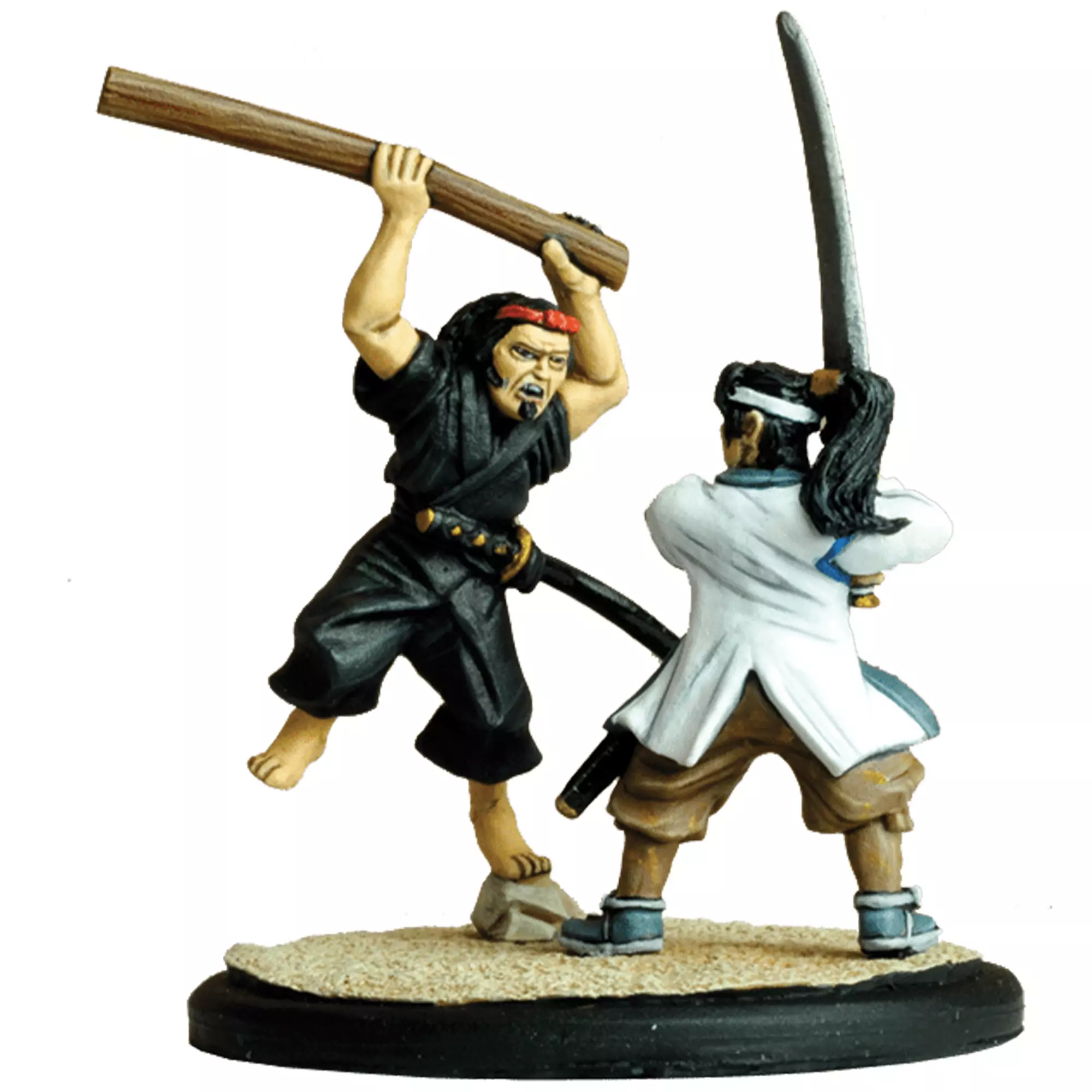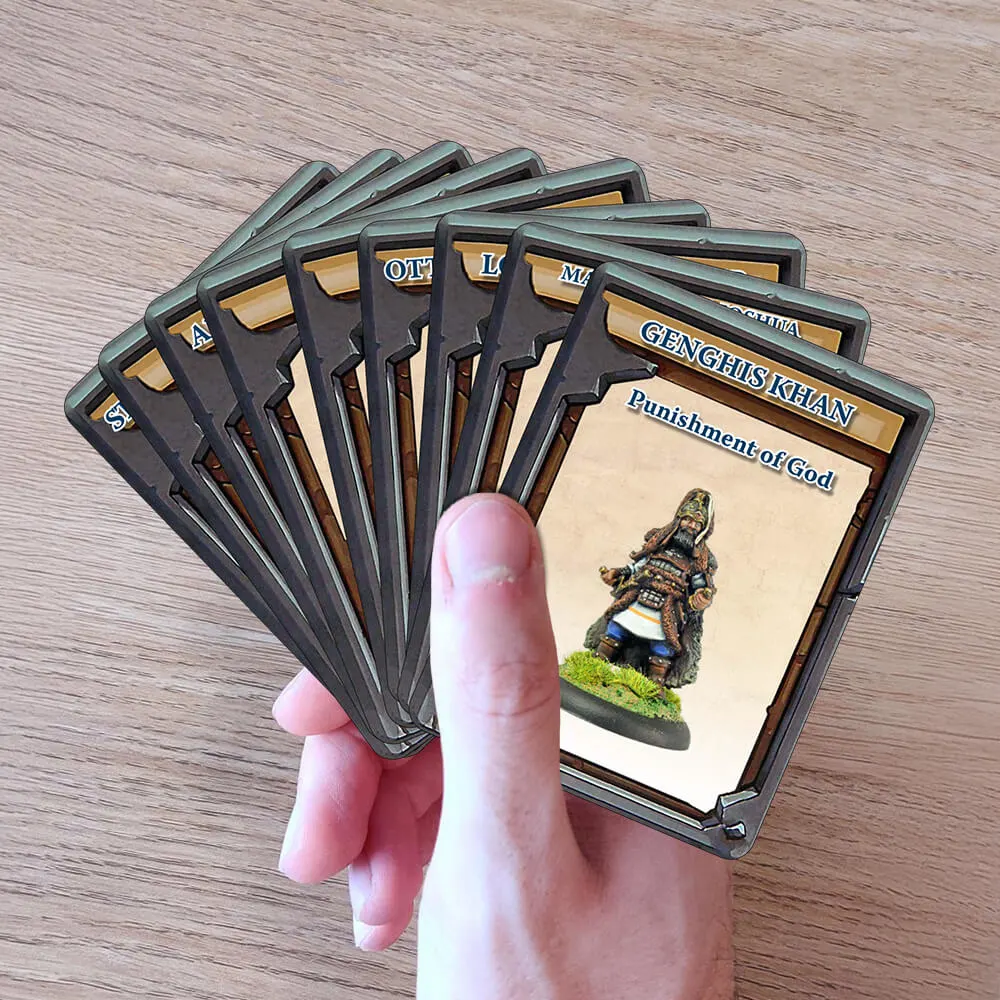Ordering from outside the UK?
We welcome magazine subscriptions and WiPrime membership orders from outside the United Kingdom – please order via our webstore. Digital/PDF products are also available to purchase and download here.
Our other products: Giants in Miniatures, games, physical magazines, and anything else that requires shipping, should be ordered from our distribution partner North Star Military Figures. You will find all Wi products on their website.
Heading to Salute 52? Feel free to order physical products from us and choose the ‘Collect at Salute’ option at the Checkout to pick up your items on the day.
Miyamoto Musashi and Sasaki Kojiro
£5.00
These two legendary figures of Japanese folklore are cast in the split second before the death blow is struck. Using the power of the imagery from the story these figures are brought to life in Gary’s vignette. To watch the cinematic version of the duel yourself, head to youtube.com and search for Musashi vs Kojiro.
Japan’s samurai warrior class stand amongst the greatest of history’s elite soldiers. They were masters of combat techniques using a wide variety of weapons, but more than that, they lived by a strict ethical code and the most accomplished samurai were also philosophers, poets, and artists. The samurai emerged from the chaos of Japan’s feudal system that stressed fealty to local lords but kept the country disunited. In the incessant in-fighting, samurai were in high demand, reaching their zenith in the Era of Warring States between 1467 and 1573. For the next three decades, only samurai warriors could wear swords throughout Japan, but the price they paid was to live in castle towns. Nevertheless, many samurai conducted pilgrimages or would represent their lord in disputes. The method they used to establish their personal hierarchy and reputation was through ritualized dueling that was almost always prearranged, but seldom to the death unless agreed upon by both sides.
Even in a class of specialists, a few legendary samurai stood out as being the best of the best. At the pinnacle of that group was Miyamoto Musashi. Musashi was born in c. 1584 and raised by his uncle from the age of seven. He would fight his first duel only six years later and won using a six-foot quarterstaff. At 16, he defeated Akiyama Tadashima, a noted swordsman. Musashi also fought in battles during this period, most notably the Battle of Sekigahara in 1600 in which he was on the losing side. Musashi’s rise continued after a short respite when he travelled to Kyoto and won duels against swordsmen from some of the best martial arts schools. Musashi also single-handedly defeated a force of swordsmen and archers sent to kill him in revenge for his victories. He continued his journeys for the next seven years, fighting duels along the way, many of which Musashi won using only a wooden training sword. Overall, he fought over 60 duels and remained undefeated, but his greatest test would be against Sasaki Kojiro.
Kojiro was the founder of his own school, specializing in short sword techniques and the katana, the classic samurai curved sword. In addition, Kojiro was adept with the two-handed long sword, the nodachi, (known as the “Drying Pole”) with which he perfected “the swallow tail” technique. Proof of his mastery of multiple weapons came when he won a duel against three men using only a metal war fan. For Musashi, this was indeed a dangerous opponent.
The two warriors met on 13 April 1612, but historians agree on little beyond
the date and the result. The venue was Funajima, a remote island north of Kokura. According to legend, Musashi carved himself a new wooden sword out of an oar while en route to the island by boat. He was also three hours late, much to the annoyance of Kojiro’s supporters, but a tactic used commonly by Musashi to provoke his opponent. When he arrived at the island, Musashi further goaded Kojiro by taunting him until Kojiro could take it no more and launched his attack. Kojiro’s sword severed Musashi’s chonmage, a hairstyle decoration like a ponytail or queue, but the master had manoeuvred Kojiro into the sunlight where he was blinded. Musashi struck swiftly, smashing Kojiro on the head. Kojiro lay dead at his feet. Musashi jumped back into his boat and sailed away before Kojiro’s followers could catch and kill him. Mushasi’s last duel where he would kill an opponent was over.
Musashi went on to fight other duels and battles, most notably in the war between the Toyotomi and Tokugawa in 1615. Afterwards, Musashi taught martial arts, specializing in throwing weapons. He also became an architect and studied Buddhism before retiring to a hermit’s life where he wrote The Book of Five Rings, which he finished shortly before his death in 1645.
Featured and Discounted Products
Browse the most recent releases in the Wi webstore.















